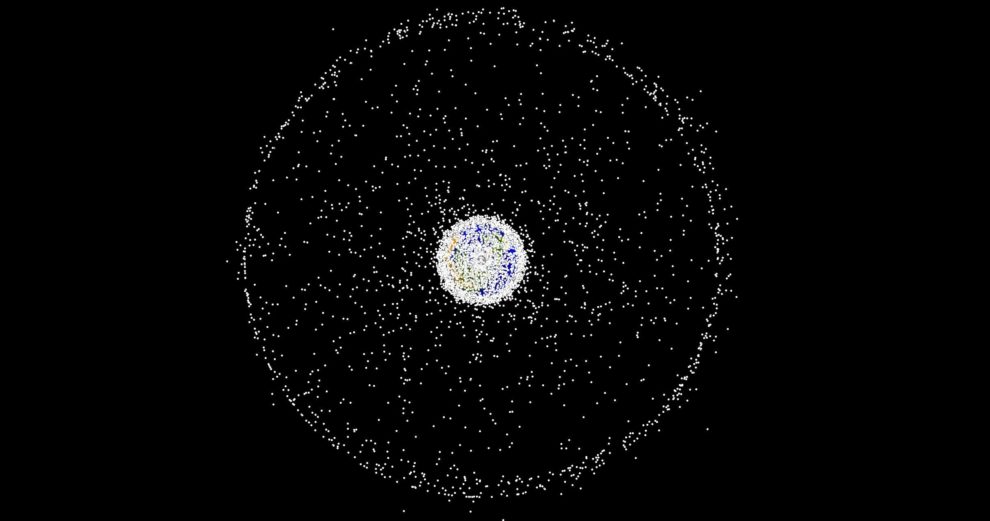
Space Pollution: RemoveDebris satellite launched to catch fast moving space debris
In order to combat the rising problem of space debris orbiting Earth, RemoveDebris satellite is going to the International Space Station aboard SpaceX Dragon rocket. The satellite has been made by the European commision in partnership with Airbus, ISIS, and other companies that will be deployed from the International Space Station (ISS) in order to catch the fast-moving space junk.
Humans have cluttered the space with satellite and rocket junks that are orbiting Earth at a very fast speed (around 15,000 miles per hour). They can someday change their direction towards Earth and can create havoc once they start crashing on the surface. In addition, these junks can cause damage to operational satellites and telescopes that are orbiting the earth.
To capture the space debris, RemoveDebris satellite is equipped with a harpoon-like net with a repurposed fishing net that will be thrown at the objects to capture it. Another CubeSat installed in the satellite is the harpoon which attaches with the debris and pulls it towards the satellite after which, it can take various measures to curb it.
A laser-guided visual navigation system creates a map of space debris thus, prompting the satellite to work accordingly. Then, it has a large drag sail designed to prevent the re-entry of the satellite into the Earth’s atmosphere at a high speed. The drag sail will slow down the velocity of the satellite ensuring that it completely burns upon entry. The satellites weigh around 220 pounds or 100 kgs in the cargo load along with total 2.6 metric tons of load that will be carried by the SpaceX Dragon rocket to the ISS.
Prof Guglielmo Aglietti said, “The reason we are doing this mission along these lines is on the grounds that it is minimal effort. As I would see it, regardless of whether there will be genuine missions to evacuate flotsam and jetsam will rely upon cost. What’s more, I Stress that on the off chance that they are to a great degree costly, individuals will think about different needs.”
In order show how much space pollution we humans have created, Stuart Grey, a scientist and lecturer at the University College London, has made a video which compares the amount of space debris present in 1957 with space chunks in 2015. It was 1957 when Russians launched the Sputnik satellite and released first of the man-made chunk in space. Since then there has been tremendous increase in the numbers and now these numbers have grown so much that they are threatening space projects and more importantly mankind itself.
Every white dot in the video represents a space debris released during space missions. Agencies have started proposing ideas to clear up space chunk before things quickly get out of hand.
Previously, Japan Aerospace Exploration Agency (JAXA) also tried to curb the rising problem of space debris.While JAXA H-II Transfer Vehicle Kounotori 6 (HTV6) succeeded in shipping the supplies to the onboard crews of the International Space Station (ISS), the junk collector failed to meet the goals of eliminating space debris from earth’s orbit.
Attributable to the unanticipated malfunction in ‘garbage collecting system,’ the collector failed to gather the space junk productively, which triggers the zooming of more than 100 million bits of space junk in the orbital region of Earth. And due to this unexpected break, Japanese scientists were expecting some serious threats to both the earth and ongoing space missions. The whizzing refuse, as expected by experts includes the recycled devices, gathered from the old spaceships and junked pieces of the old missile.
As confirmed by JAXA, the tether measured whopping 2,300 feet and was made out of sturdy stainless steel and aluminum wires. Before the scheduled reentry of HTV6, Japan wanted to test the efficiency of the mission. But unfortunately, the unforeseen fault in the component of the tether dragged the space junk clean-up task to a shocking wind down.


